With what and how to properly caulk the bath?
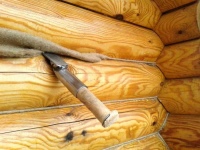
Caulking cracks - one of the most important stages of the construction of a wooden bath. If you do not perform this step in time, you can not only significantly impair the further use of the steam room, but also provoke rotting of wood or even its destruction.
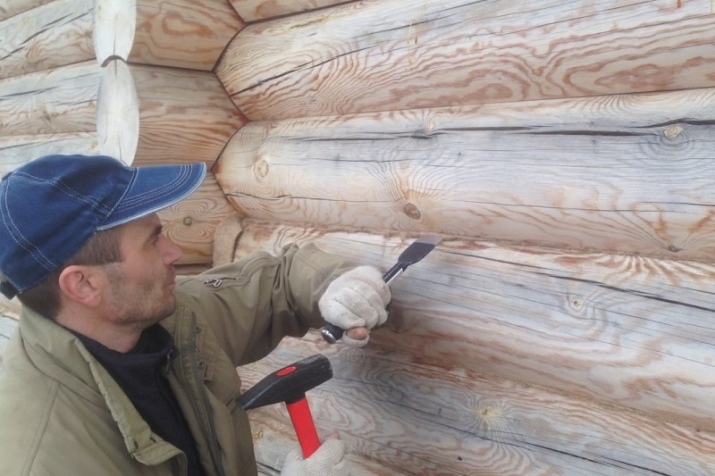
Basic principles
Caulking is the process of caulking the gaps that form between the logs during construction. This procedure helps not only to insulate the building, but also to eliminate gaps that appear due to shrinkage, protection against drafts and condensation. If you caulk the bath from a log or beam, you can significantly reduce the time spent on heating the steam room and maintaining the desired temperature inside. Finally, it is this procedure prevents rotting of the wooden structure and even its deformation. The material that is chosen for this process must have the following properties:
- good heat retention;
- be environmentally friendly;
- durable;
- resistant to the influence of the environment.
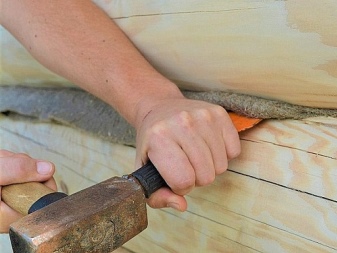
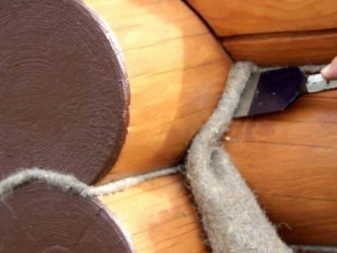
The first serious caulking is correct to do in 6 months, after you put the log house. By this time, shrinkage should be mostly completed, and the logs will lose most of their moisture, and you can not fear the emergence of new cracks. The sauna must be caulked from the inside as well as from the outside. After the first phase the doors and windows are installed. The second procedure is carried out after a year, during which the state of the joints and cracks is checked and any flaws are eliminated. In some cases, after five years, it is necessary to repeat the procedure.
It should be said that when using moss, the primary caulking sometimes occurs even at the stage of erecting a log house, but it is rather auxiliary and is not carried out in full force.
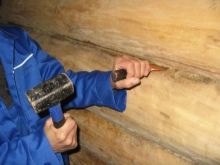
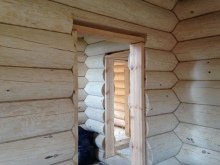
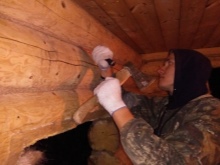
What to caulk with?
Of course, you can not caulk the cracks in the bath with ordinary wool - for this you will need more appropriate, ideally - natural materials. Industrial sealants can be an alternative to them.
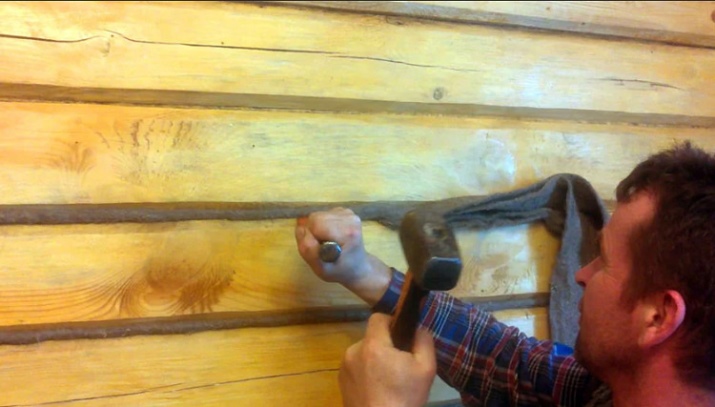
Moss
Moss is considered the most commonly used material for this purpose. Despite the fact that today a sufficient number of materials have appeared, this plant still remains in the leading positions due to its outstanding characteristics. The environmentally friendly material has a significant antibacterial effect and provides quality thermal insulation. It does not rot and can be used for a long time. It is also worth mentioning that microorganisms do not reproduce in moss.
However, the material has a number of disadvantages. Considerable time will have to devote to the selection and collection of moss. Overly moist samples will contribute to rotting of the structure, and too dry will break and crumble. Do not forget about the fact that the purchase of moss costs a significant amount. Natural material is not particularly easy to lay out, so it is better to combine it with hemp.
Before starting work, the moss must first be left to dry in the fresh air, turning it over regularly. Then the material is soaked for 30-60 minutes, squeezed and then spread out in a layer and aligned so that the ends of the fragment hang down from both ends of the log house. When all the logs will be put down, the excess fibers will have to shorten, or wrap and tuck back into the cracks. Subsequent stages of work will not occur until 6 months and 1.5 years later, and the entire process will turn out to be a three-stage process.
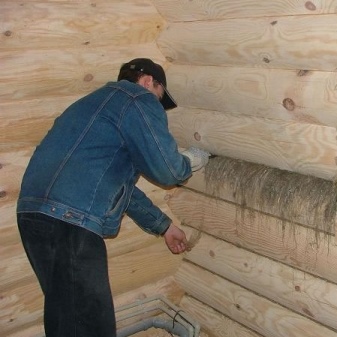

Jute
In recent years, quite often jute fiber is used to caulk the cracks in the building. This material contributes to quality thermal insulation due to the presence of natural binder resins and does not get wet at all, even in conditions of high humidity. It is worth noting that the fiber is very rarely spoiled due to rotting. Ecologically safe material lies well between the logs, simplifying the whole task of caulking.
Nevertheless, this material has a small disadvantage - it often becomes a breeding ground for moths, and therefore requires pre-treatment against this pest.
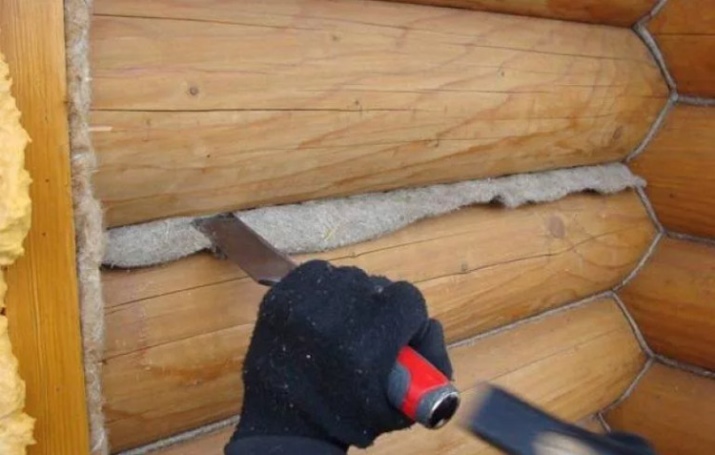
It is generally accepted to distinguish three main varieties of jute.
- Jute bast Formed by combing the fiber with alignment in the desired direction. The material retains its properties, but its rigidity and low density complicate the process of caulking. As the fiber dries out, it has to be laid out several times. There is also a high probability that the hemp can be trivialized for the nests of birds.
- Jute felt is formed by combining 90% of jute and 10% of linen fibers. The flexible material is easier to work with than hemp, but the problem may be its short length, which will make it fall out. To prevent this situation, it is better to choose fibers that reach a length of at least 20 millimeters. It is for jute felt is characterized by the appearance of moths.
- Flax jute looks like a ribbon created by combining soft linen and hard jute fibers. It is easy to use, but it is prone to rot and requires treatment against pests. In its properties it resembles linovatin.
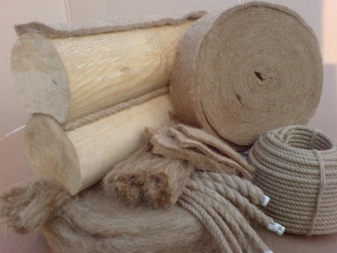
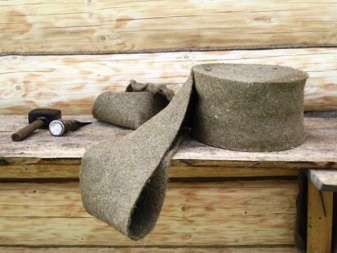
Bales
Hemp is the waste left after the first stage of processing of jute fiber, hemp or flax. This material is very uncomfortable to work with, in addition, it is very often subject to rotting and transformation into chaff, which has to be cleaned and re-bonded. However, this fiber is environmentally friendly material with thermal insulation and antibacterial characteristics. The higher the quality of the originally processed material, the better the quality of the hemp will be. These fibers are cheap and available. Hemp is sold in blocks and rolls. During caulking, the necessary amount of material is extracted from the package, twisted into a bundle and used to fill the seam.
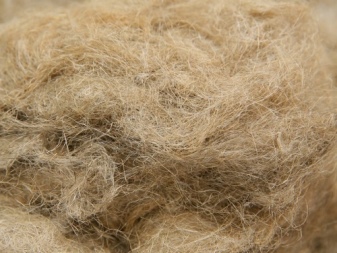
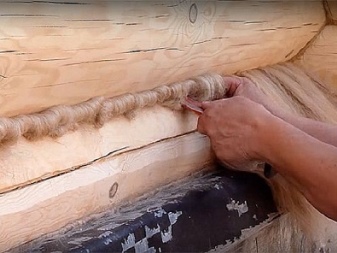
Calculation
In that situation, when a natural material is chosen for the work, it is quite difficult to calculate how much of it will be needed. Take into account the wood from which the log house is made, and what grooves are in it, and the depth, and the number of gaps and gaps that arose during shrinkage. For example, the grooves made by your own hands require more material. Fiber consumption also increases when using sanded logs. When using a log, less material will be needed. Again, hemp, for example, is very compressed, and therefore its consumption increases significantly.
It turns out that it is most reasonable in this case to estimate an average figure, prepare a reserve and act according to the situation.
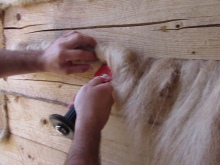
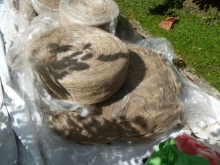
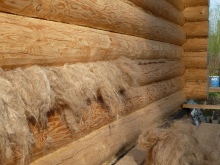
Technology
Caulk cracks in the log house is quite simple with their own hands, but you should be prepared that this process will take enough time. As a rule, One person can caulk the joints of a small bath of 5 by 4 meters in only 10 days, given that the work he will devote about 8 hours a day. The amount of insulation used should be optimal. Too little will not protect the structure, and too much - will lead to an unnecessary increase in the log cabin. The work begins with the lower vein and is carried out along the entire perimeter of the sauna.
First, it is necessary to treat the outer part of the structure, and then do the same from the inside. Only after you have completely finished with one vein, you can move on to the next one. Particular attention should be paid to the corner areas, since they are characterized by the appearance of the largest cracks. During the initial caulking, the already existing sagging material should be used first, and then new material should be added. The use of tools is not obligatory and is chosen only when necessary. It is more convenient to treat one meter perimeter at a time. If new gaps appear after sealing, they are filled with insulation. The gasket is first rolled up in a bundle and then hammered in with a cudgel until it has a springy effect.
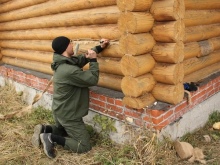
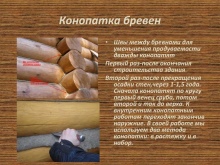
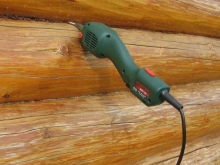
Caulk the walls of the bath must always be in the direction of the bottom up, following strictly along the perimeter. If you do not maintain the sequence, you can achieve a skewed structure, due to the fact that the bath will be unevenly lifted. Before starting the work, the pipe is released in the places of fixation with the ceiling and roof or is removed for a time at all to avoid damage. The use of fibers for caulking can take place either in a set or in a stretch. The first method is convenient for eliminating large gaps and gaps.
The material is twisted into a thick bundle and, if necessary, twisted into a ball. The resulting fiber will need to be brought to the gap and pushed inside with auxiliary tools. When using caulking, there is no need to screw in the insulation. It will be enough just to push it into the gap between the logs, and then finally push it in, for example, with a mallet. New fiber is added until it no longer fits.
If it is impossible to get into any gap with a tool, you can use assembly foam instead.
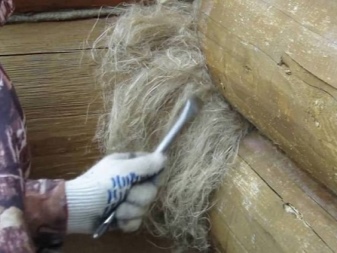
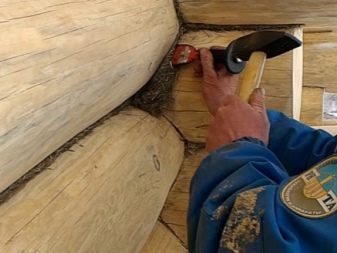
You can learn about the tricky way of caulking a log cabin from the video below.




